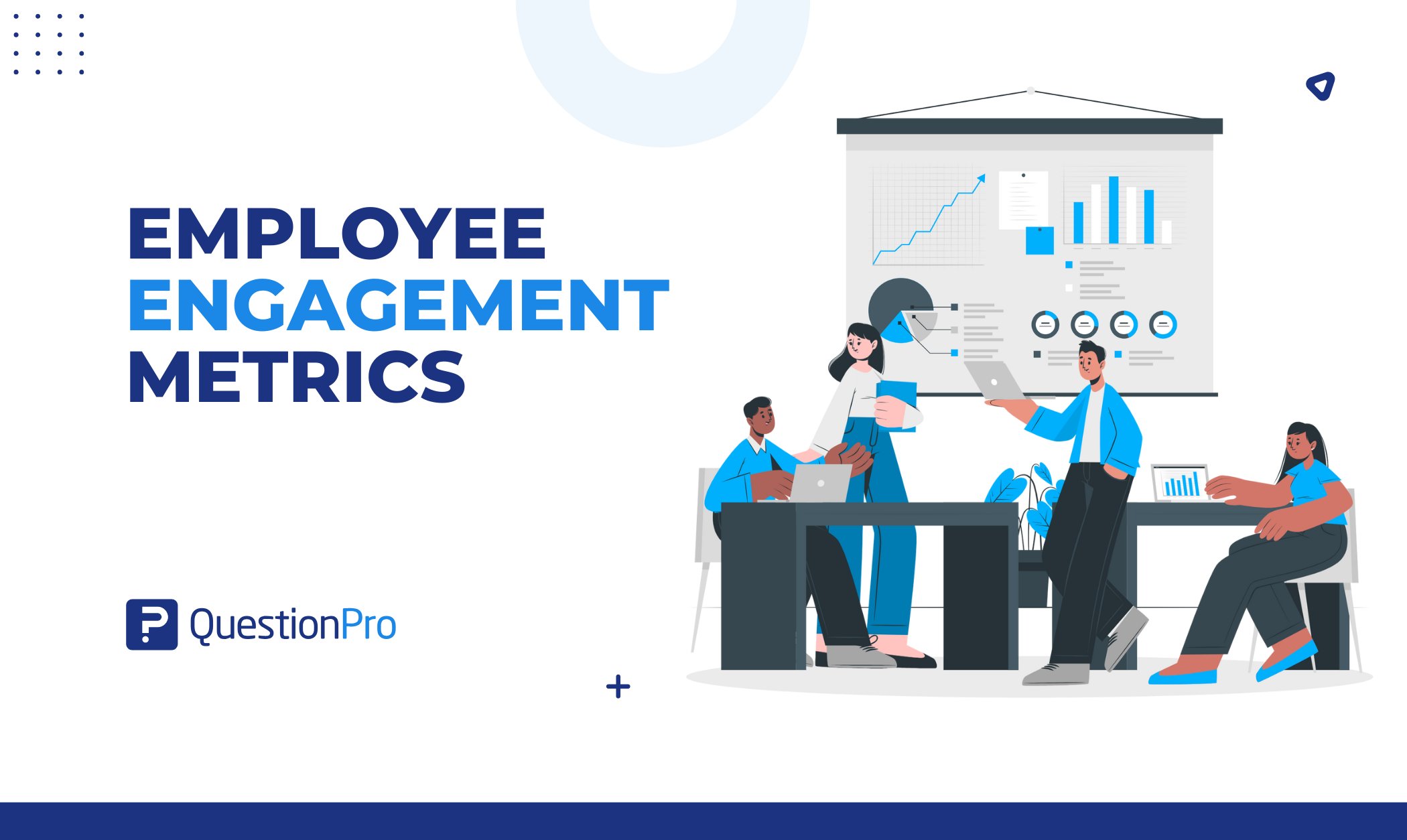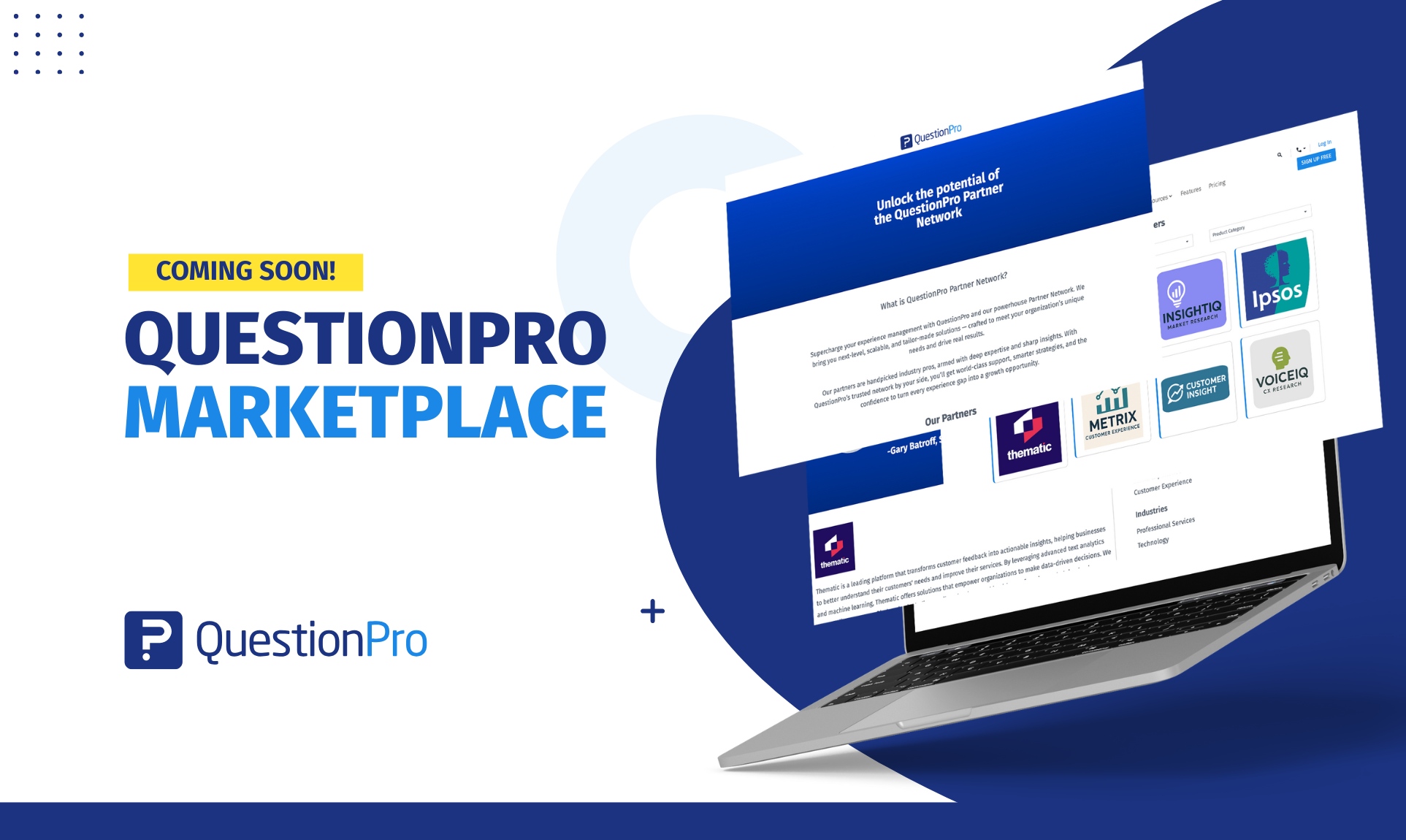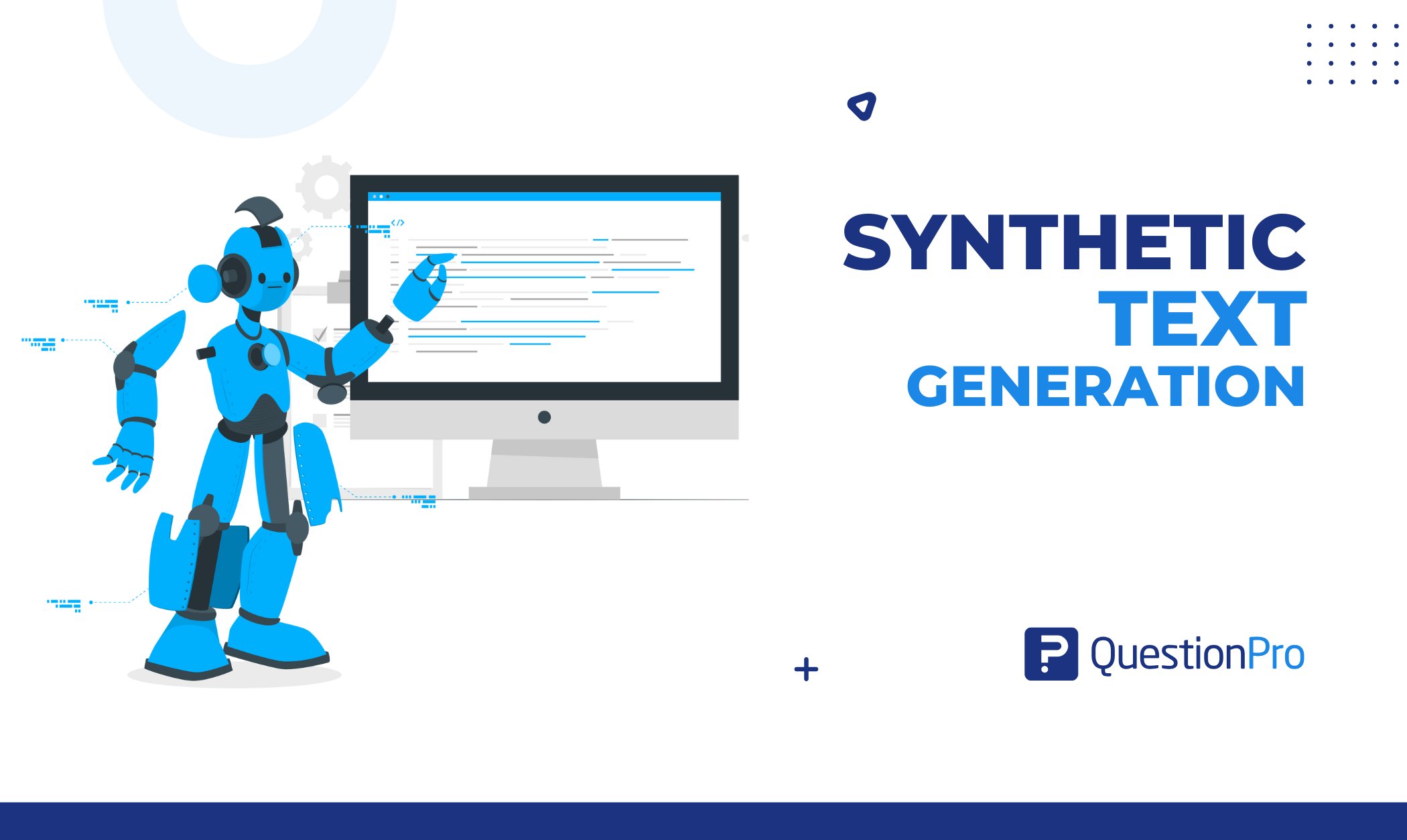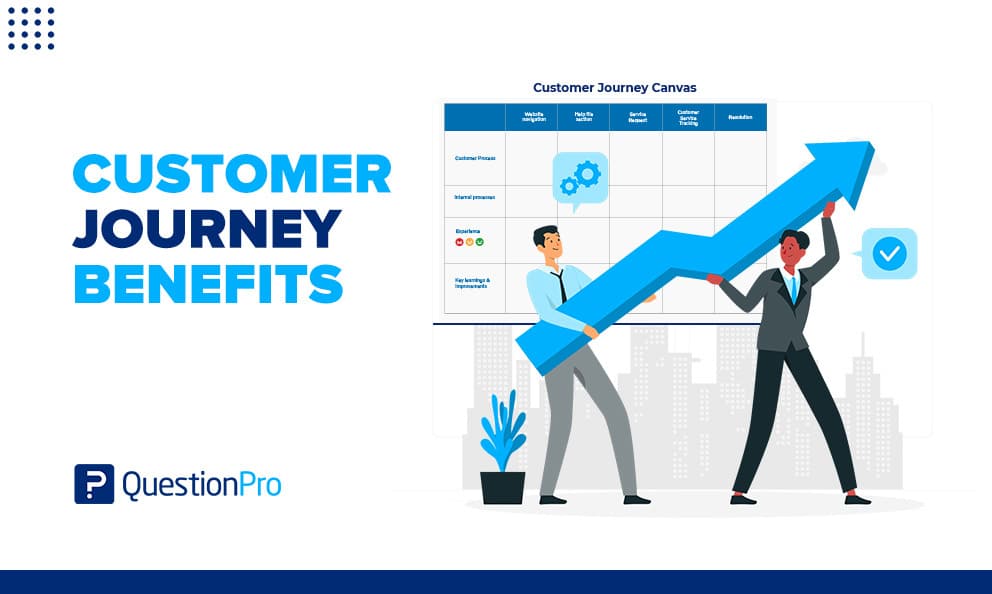
Many companies are looking for ways to analyze their current sales process to get more sales. A Customer Journey Map (CJM) is a method that allows companies to view the sales process from the customer’s perspective to find out what they are doing well and how they can improve their sales model. In this article, we take a look at what customer journey benefits of mapping are and the ten benefits of this strategy.
If you are interested in using a new strategy to overhaul your sales process so that you can increase customer engagement and drive sales, you may want to consider applying a customer journey mapping.
What is a Customer Journey?
Customer Journey is a process used to describe the different stages a customer goes through to purchase a product or service. The five most common stages a customer goes through during this process are:
- Awareness: This refers to when a potential consumer first becomes aware of your product through various advertisements or word of mouth. Here they recognize they might need your product or service.
- Consideration: Through customer testimonials, blog posts, and social media, consumers compare and decide if your product is better than similar products and if they would like to buy what they need through your company.
- Purchase: Ultimately, customers decide whether to buy from your company or use another company’s products based on their research.
- Retention: In this stage, it is key that your company has a customer success team to give a post-sales service. This could translate into actions such as offering resources for free to your clients, having a customer loyalty program in place and touching base with your customer to see if everything is working well with them and your product.
- Customer advocacy: If you’ve done well in previous steps of the customer journey, when you send a customer satisfaction survey, there’s a good chance for your customers to post positive reviews or recommend their products to others, so the customer journey cycle continues.
You can represent the five stages, or similar ones, on a map that you can use as a visual representation of the buying process during various touchpoints, such as social media, your website, or even a phone call.
It shows customer interactions and pain points throughout the buying process so the business can better understand what it’s doing well to engage customers and what it can do to improve.
If you like reading about the benefits of customer journey, you might find it interesting to learn about how to create a customer journey canvas
10 Customer Journey Benefits for Mapping
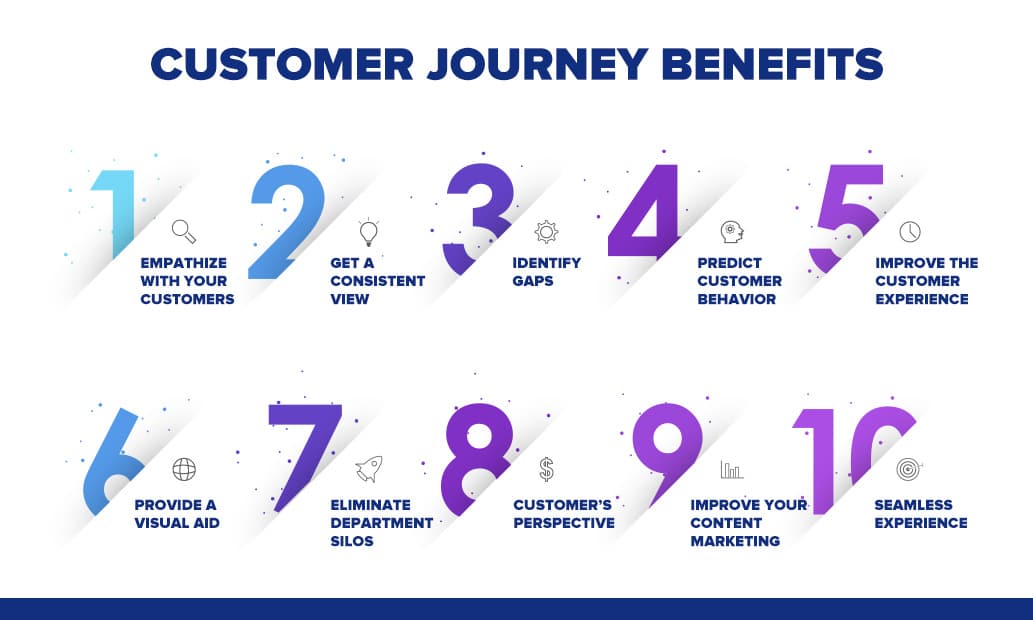
If you still find yourself second-guessing the idea of implementing a customer journey, here’s a list of 7 benefits that will bring you using this tool at work:
1. Empathize with Your Customers
Using a customer journey map allows you to shift perspective and see what the sales experience is like from the customer’s point of view rather than from the sales perspective. You can understand their point of view more clearly and see what led them to choose your product or why they chose a different brand. Consider using this data to improve the consumer experience in the future and adapt your sales and marketing methods as needed.
2. Get a Consistent View of Your Journey
Sometimes departments have different information about a customer’s experience. A customer journey map provides all departments with consistent information about the customer’s journey with your business.
This allows sales, marketing, and all teams involved in the sales process to have a clear view of the interactions a buyer has with your company and provides them with the same information, which can help them work together toward the goal. a common way to produce more sales.
3. Identify Gaps in Service or Communications
You can more easily spot service gaps in your current sales and marketing systems by using a journey map. For example, you may discover that you don’t have a way to instantly communicate with potential consumers on your website and that has caused some to look elsewhere.
This may lead you to make changes to your website to include an instant messaging tool that allows potential customers to talk to you about questions they may have. This little addition to your sales strategy creates an added convenience for some customers and may convince them to buy from you.
4. Predict Customer Behavior
Journey maps can predict customer behavior as they move through the different stages of the sales funnel. You can use these patterns to predict which type of prospect is most likely to convert. Knowing your audience can help you decide what you can do to move them forward in the sales process.
Some customers would like to speak with a representative. Others might prefer a less direct approach and appreciate newsletters or blog posts related to your products. Consider using maps to effectively predict what your customers need during their stage in the process, and strive to offer those solutions.
5. Improve the Customer Journey
Using the map allows you to understand if customers have a pleasant experience when interacting with your business. You can determine specific aspects of your current sales process that customers seem to like and what processes you can improve to make their experience more enjoyable.
Using tools like QuestionPro CX can help you collect valuable data to modify customer journeys in a positive way and facilitate their engagement with your brand.
If you like reading about how to improve your customer journey, you might find it interesting to learn about why is it important to have a customer experience management platform.
6. Provide a Visual Aid to Stakeholders
A visual aid, such as a customer journey map, can be helpful in conveying your current sales process to company stakeholders.
You can present them through presentations, brochures, or roadmap software. Concepts like the customer journey can be much easier to interpret with a visual element like the map, and stakeholders may be more willing to provide monetary means to help implement solutions to improve their current processes.
7. Eliminate Department Silos
An organizational silo refers to the different departments in a company that operates independently and typically do not share information with each other. This prevents departments from having all the knowledge they need to improve the customer experience. Establishing customer journey maps allows you to see how departments work together.
For example, you may find that some prospects were more engaged when they first looked at your product and then less engaged when they started researching your competitor’s brands.
This shows that the marketing team and the sales team could have worked together more proactively to come up with strategies to successfully nurture their leads in order to move them through the sales funnel analysis. Information from journey maps can be used to collaborate across teams and address customer needs using the knowledge and skills of multiple departments.
8. View the Experience From the Customer’s Perspective
Understanding the customer’s perspective is important because you can learn more about their emotional experience as they go through the stages of the sales process. You can use the data to correlate how they felt during their experience, and then take action to alter the key points of the journey to make it more enjoyable for future consumers.
For example, you can determine which visual aids on your website have led to the most conversions and add similar content and alter or remove content that wasn’t contributing to customer journey satisfaction.
9. Improve Your Content Marketing Strategy
Since the customer experience is different based on their interests, values and motivations, it is important to create personalized marketing content for each demographic group. By charting the progression of each customer’s journey, you can understand which marketing strategies some customers prefer over others. Based on that information, you can choose different marketing strategies for each demographic.
For example, potential customers who like to use social media during their customer journey may prefer to shop for products using a data-driven visual commerce platform, which allows shopping tags to be added to images on different social media platforms.
Users click on an image and can instantly purchase that product. Instead, some customers may prefer to speak with a representative on the phone before deciding to buy something. A user journey map gives you the opportunity to identify the needs of each customer so that you can tailor the marketing experience to each of them.
10. Create a More Seamless Experience
Another advantage of the customer journey map is that you can pinpoint the areas where you may want more touchpoints. A touchpoint is any interaction your customer might have with your product, such as a testimonial, blog review, or paid advertisement.
By understanding how customers navigate the sales journey using touchpoints, you can determine where you can add or remove touchpoints to make the overall experience smoother for the consumer. Areas where you could include more customer interactions include nurturing emails or pay-per-click ads.
Keeping a better track of all your customer journey touchpoints is not an easy task, that’s why using a customer journey dashboard is advisable to view and action consumer information easily.
LEARN ABOUT: Consumer Decision Journey
How to Make the Most Out of Your Customer Journey Strategy?
While it is important to have in place a CJM, the truth is that most of the benefits mentioned above can only be seen when you bring theory to action. If you really want to leverage your CJM, you need tools that enable you to get actionable insights.
QuestionPro CX is a customer experience management platform that provides businesses with powerful tools to boost customer retention and advocacy, such as survey creation and deployment, a closed-loop feedback system, sentiment analysis, segmentation and workflow settings, and more!
At QuestionPro CX we offer you the best tools to monitor the customer journey benefits in your organization. Contact us! We would love to team up with you to help you achieve better customer experiences!




